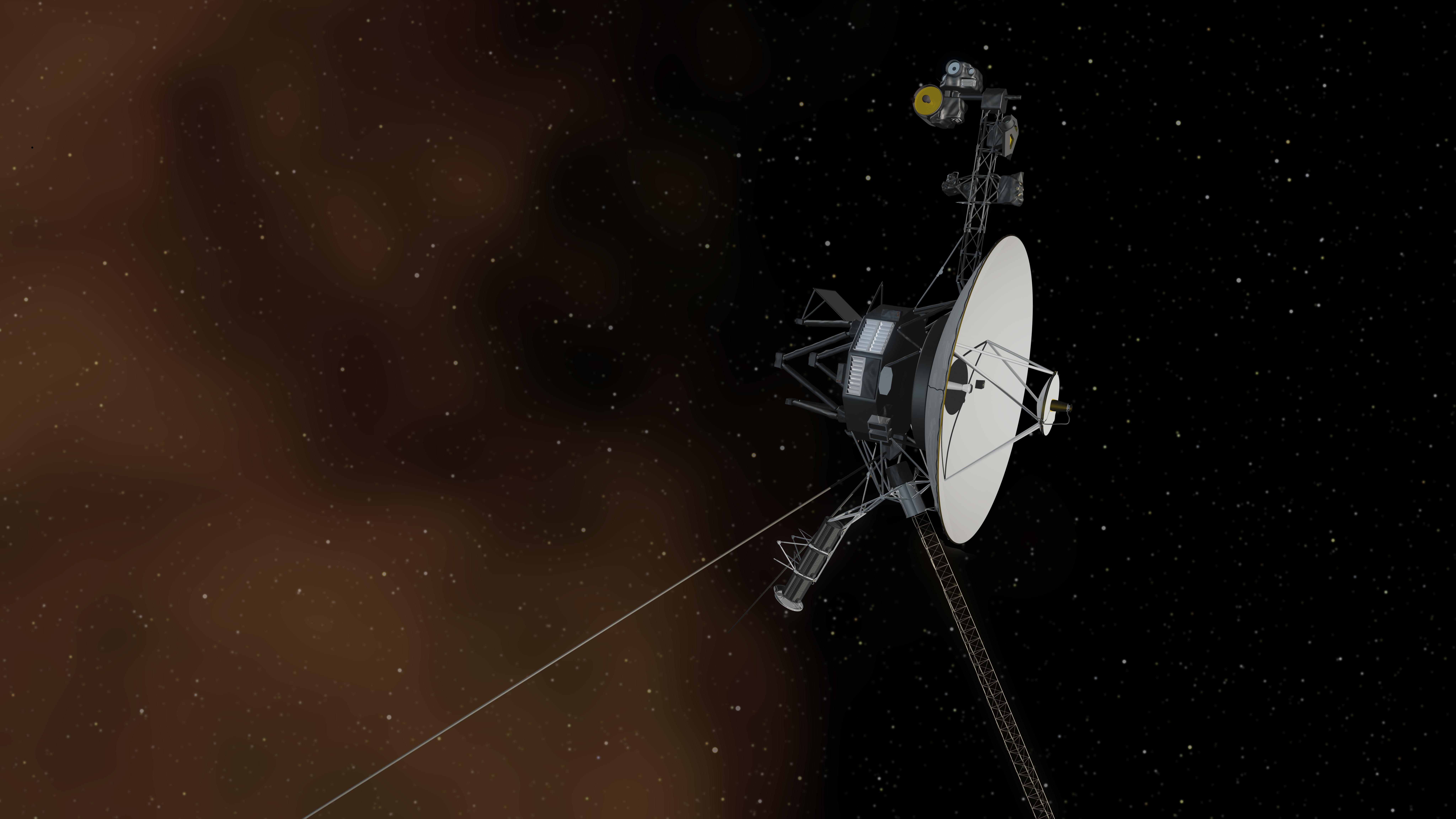
Four and a half decades after launch and over 14 billion miles from Earth, Voyager 1 still makes new discoveries. The spacecraft has picked up the signature of interstellar space itself, a faint plasma "hum" scientists compared to gentle rain.
Plasma has been part of Voyager 1's mission from its launch — the spacecraft discovered lightning strikes in Jupiter's atmosphere and studied how the solar wind tapered off in the outer solar system.
And since 2012, scientists have turned the spacecraft's instruments upon a completely unexplored part of distant space. That's when Voyager 1 crossed the heliopause, where the solar wind — the constant stream of charged particles that flows off the sun — is no longer strong enough to hold back the interstellar medium that surrounds our little neighborhood. Since 2012, as Voyager 1 has drifted ever farther from the sun, the spacecraft has measured the plasma around it.
Voyager at 40: 40 Photos from NASA's epic 'grand tour' mission
This part of the interstellar medium is, mostly, quiet. "It's very faint and monotone, because it is in a narrow frequency bandwidth," Stella Koch Ocker, a doctoral student at Cornell University who led the new research, said in a statement. "We're detecting the faint, persistent hum of interstellar gas."
But every few years, the solar wind pushes back. Voyager 1 picks up those events as shockwaves. "In the case of a solar outburst, it's like detecting a lightning burst in a thunderstorm," senior author James Cordes, an astronomer at Cornell, said in the same statement. "Then it's back to a gentle rain."
For a time, scientists thought those shocks were the only way that Voyager 1 could measure the density of plasma out there.
Get the Space.com Newsletter
Breaking space news, the latest updates on rocket launches, skywatching events and more!
Related: What spacecraft will enter interstellar space next?
But now that scientists have heard this unexpected hum, they can track the interstellar medium between shocks, which can help them understand much more about a largely undiscovered expanse of space. Ocker believes there's much more low-level activity in the interstellar medium than scientists previously thought.
"Now we know we don't need a fortuitous event related to the sun to measure interstellar plasma," Shami Chatterjee, a Cornell astronomer, said in the same statement. "Regardless of what the sun is doing, Voyager is sending back detail. The craft is saying, 'Here's the density I'm swimming through right now. And here it is now. And here it is now. And here it is now.' Voyager is quite distant and will be doing this continuously."
Voyager 1 and its twin, Voyager 2, will sail away to the stars for time immemorial. But for scientists here on Earth, the spacecraft's days are numbered. Sometime within this decade, the spacecraft's plutonium power sources will finally run dry.
In the meantime, scientists are savoring every last bit of data that trickles back. "It's the engineering gift to science that keeps on giving," Ocker said.
Follow us on Twitter @Spacedotcom and on Facebook.
Join our Space Forums to keep talking space on the latest missions, night sky and more! And if you have a news tip, correction or comment, let us know at: community@space.com.

Rahul Rao is a graduate of New York University's SHERP and a freelance science writer, regularly covering physics, space, and infrastructure. His work has appeared in Gizmodo, Popular Science, Inverse, IEEE Spectrum, and Continuum. He enjoys riding trains for fun, and he has seen every surviving episode of Doctor Who. He holds a masters degree in science writing from New York University's Science, Health and Environmental Reporting Program (SHERP) and earned a bachelors degree from Vanderbilt University, where he studied English and physics.









